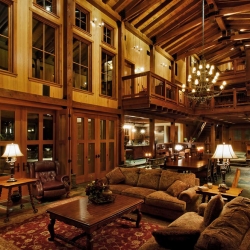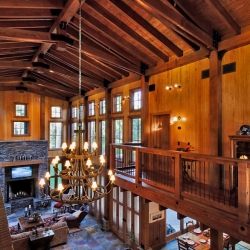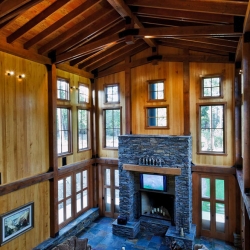Alaska Yellow Cedar: The most valuable species in Alaska
Alaska Yellow Cedar (“AYC”) is a species with many specialized interior and exterior applications. AYC can be worked into very tight joinery, and contains natural properties that serve as a strong resistance to rot and decay. The Japanese have used this exquisite species for centuries to build their temples and teahouses. AYC characteristics afford a subtle, rich beauty to its many applications.
Extremely tight grained – average growth rings per inch exceeding 40
Extraordinary natural resistance to rot, decay, weather, and insects
Well suited for tight joinery and commonly used for Japanese temples and teahouses
The average diameter of the tree ranges from 2 – 4 feet with a height of 80 – 100 feet. The sapwood of this species is narrow and slightly lighter than the bright clear yellow heartwood. The wood is fine textured, straight grained, easily worked and durable. The lumber from Alaska Yellow Cedar is readily worked by both hand and machine tools. It nails and glues well and holds paint, stains, and varnishes. It also has a uniquely pleasing aroma.
Beautiful silver gray color if left unfinished – “Cape” style homes in the Northeastern US
Alaska Yellow Cedar is extremely diverse in construction application, from structural timbers to interior trim, decking, siding, and paneling. The exterior applications such as decking and siding are desirable because of Alaska Yellow Cedar’s natural resistance to rot, insects and decay. When left unfinished, it weathers to a beautiful silver gray color. This results in the same appearance, as you will see on many of the “cape” style homes in the Northeastern United States.



